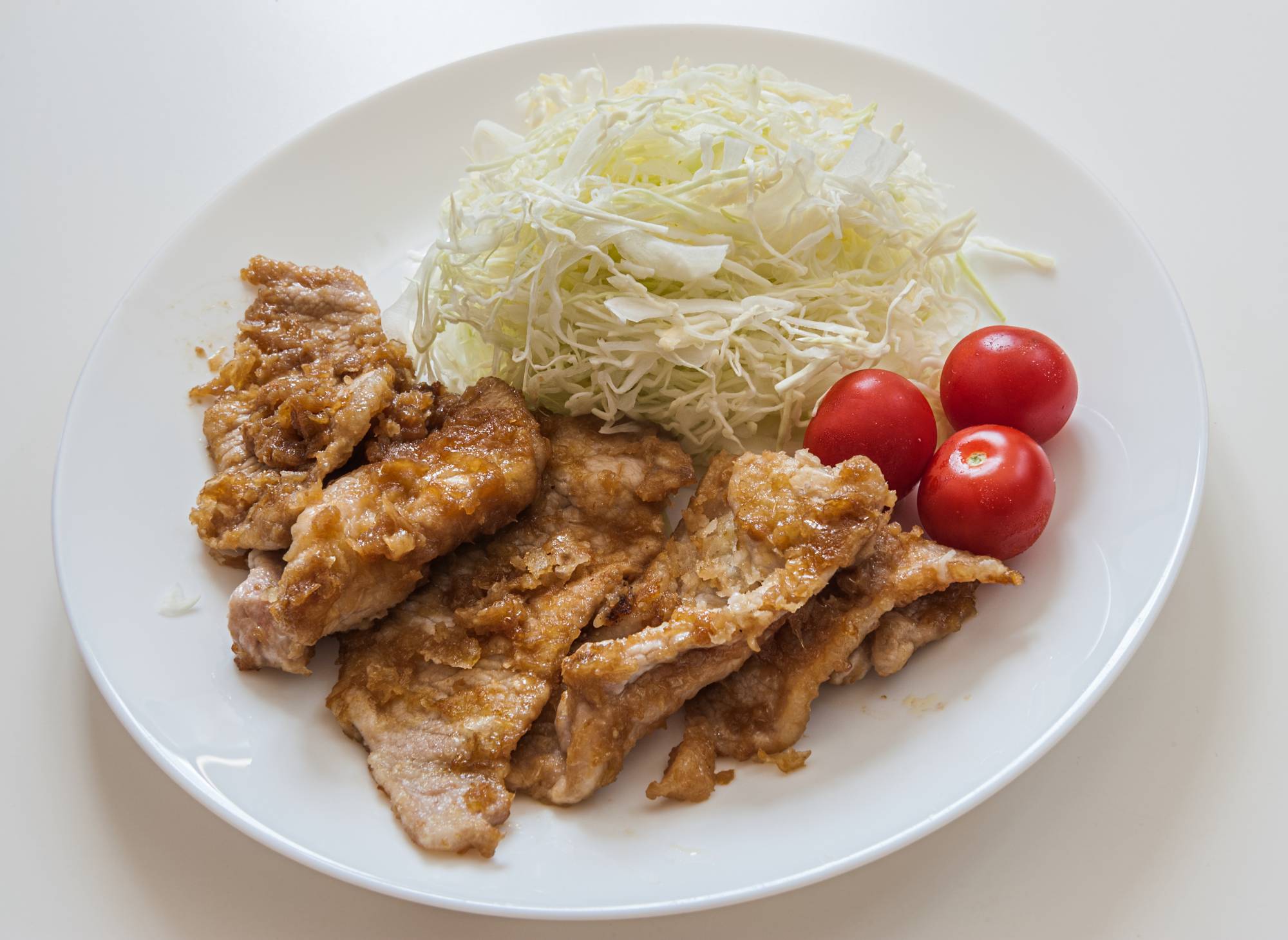Buta no shōga yaki (panfried ginger pork) is one of the most popular and ubiquitous offerings at restaurants that serve teishoku (set meals). It's a particularly great meal during the hot, muggy and exhausting days of summer. The vitamins in pork, especially thiamine, or vitamin B1, are essential for various bodily functions, and ginger has traditionally been thought to encourage perspiration, which helps to cool down the body. Besides its purported health benefits, the thin slices of pork combined with the refreshing sweet and salty ginger sauce pairs really well with plain rice.
Although it's such a popular dish, ginger pork can turn out badly if you don't nail down a few points. One is choosing the right cut of meat. You may want to reduce the amount of fat by using a lean cut such as momo (rump). However, this meat can become rather tough when it's left for some time after cooking. Similarly, rōsu (loin), the cut most often sold pre-sliced for ginger pork, may stiffen up when left for a while after cooking. When you use ginger pork in a bento, for example, and want to avoid any chance of the pork becoming rather chewy, try using bara (belly). Although it is the fattiest cut, this will keep the meat tender even when it cools.
Another way to prevent the meat from toughening up is to slice it more thickly. The ideal thickness for ginger pork is around 3 to 4 millimeters, and scoring the meat against the grain will also help to tenderize it, as will coating it with a little cornstarch. The most important thing is to not overcook it. You only need to sear the meat lightly for a minute or so on each side before you combine it with the sauce. Do not cook the sauce for too long either or the fresh taste of the ginger will dissipate.

















With your current subscription plan you can comment on stories. However, before writing your first comment, please create a display name in the Profile section of your subscriber account page.